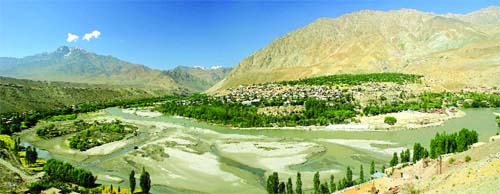Willayat Ali
Kargil has a rich history, diverse and refined culture, great tourist potential, and is geo-strategically important. Despite this, it remains disconnected and suffers indifference at the hands of its people and the government.
According to geo-archaeological finds of prehistoric period discovered such as hearth, tools and caves from Mulbekh, Pashkyum, Namsuru, Tangole and Karchey, suggest that Kargil was first occupied in prehistoric times in the Palaeolithic/Neolithic era (500,000 to 2500 BCE). Some of these places have thus been continuously occupied by people for several thousand years from ancient to modern times. There are several such sites in Kargil that are unexplored but can help reveal the rich history of the region.
Through the course of history, people in Kargil have followed different religions such as Bonism, Buddhism and Islam. Some scholars argue that pre-Bon and Bon beliefs shared similarities with Hinduism. The existence of Place-names like BhimBhat DrupatiKund in Drass, derived from the names of Hindu Gods and Goddesses supports the theory that people in Kargil followed some strands of Aryan or Vedic belief-systems around 1500 BCE. The region came under Buddhist influence as it became popular across the Indian subcontinent in sixth century BCE.
In subsequent centuries, Buddhism is believed to have reached Tibet and Central Asia through Kargil, Leh and Baltistan. These regions still have unique Buddhist rock statues, such as the ones seen at Karchey, Drass, Apati and Mulbekh. The iconography of these statues is unique and suggests that Kargil was once an important hub for Buddhism. Islam took root in Kargil in the 15th Century CE through the efforts of scholars such as Syed Ali Hamadan and Syed Shamsh-ud-Din Araki. As a result of these processes, Kargil is now an important hub for the Shiasm of Islam.
Kargil was also an integral part of the Silk Route trade and was centrally located between Leh, Skardo, Padum and Srinagar. Kargil was politically divided into kingdoms, including the ones at Karchy, Chiktan, Sod, Pashkyum and Mulbekh. The ruins of the castles and palaces from these kingdoms are still visible though most were destroyed in 1846 CE by the Dogra army led by General Zorawar Singh. Some of the famous kings from these kingdoms include the likes of Gashoo Tha-Tha Khan, Boti Khan, Abdal Khan, Amrodh Cho, Habib Cho, Tsering Malik, Naithi Stan, Kunchok Sherab Stan and Thi Sultan Cho.
As a result of these historical processes, Kargili society becomes multiethnic, multilingual and multicultural society. Even today, communities such as the Dard, Balti, Purig, Hor, Zangskar etc live in Kargil district. Each of them has their unique cuisine, customs, language, and dress.
Kargil is also endowed with a rich and diverse natural heritage, that it shares with areas such as Leh, Srinagar, Skardo, Khaplu, Gilgit, Chitral, Hunza, Samarkand, Bokhara, Yarkand, Kashgar, Tibet, Manali, Nubra, Zangskar, and Kishtwar. Many of these places attract thousands of tourism each year, while Kargil potential has never been realised due to neglect.
Kargil is also of great geostrategic importance. In the past, the kingdoms of Tibet, Baltistan and Leh would vie to control Kargil. Later, the kings of Jammu and Kashmir occupied this region through the Dogra conquest. The importance of Kargil is underlined by the routes that connect it to various important regions: Srinagar-Kargil (205 km), Kargil-Zangskar (240 km), Kargil-Leh (235 km), and Kargil-Skardu (130 km). Historically, invaders, religious preachers, and traders travelled along these routes. Aryans had come and settled in this region through these routes. The Greek general Alexandra’s army is believed to have crossed the region and still some people from Garkone region claim that their ancestry is among the army of Alexandra. Gen Mirza Haider Dughlaq, on behalf of Sultan Said Khan of Khashgar, invaded the Kargil region in 1532 CE, before travelling to Kashmir over Zoji-la. Dogra general Zorawar Singh also entered the Ladakh region through the Padder Zanskar route and managed to reach western Tibet. Since the Partition of 1947, India and Pakistan have fought several wars to occupy this region. The Kargil War of 1999 highlighted the importance of this region and made the region famous around the world.
The closure of several of these trade routes after Partition resulted in a great loss to Kargil. However, it still has the potential to play a key role in the economic development of the state and the rest of the country. For instance, trade can once again be bolstered by opening the Kargil-Skardo road. This route can also provide India access to Central Asia, which has gained geopolitical importance for its rich energy resources.
While Kargil has a rich economic and political history, its strengths have not been tapped in a meaningful way. If this neglect, lack of awareness, and the lack of a coherent policy continues, this potential may soon be eroded, or worse, squandered.
(The author is a Lecturer at DIET, Kargil)
Trending Now
E-Paper


